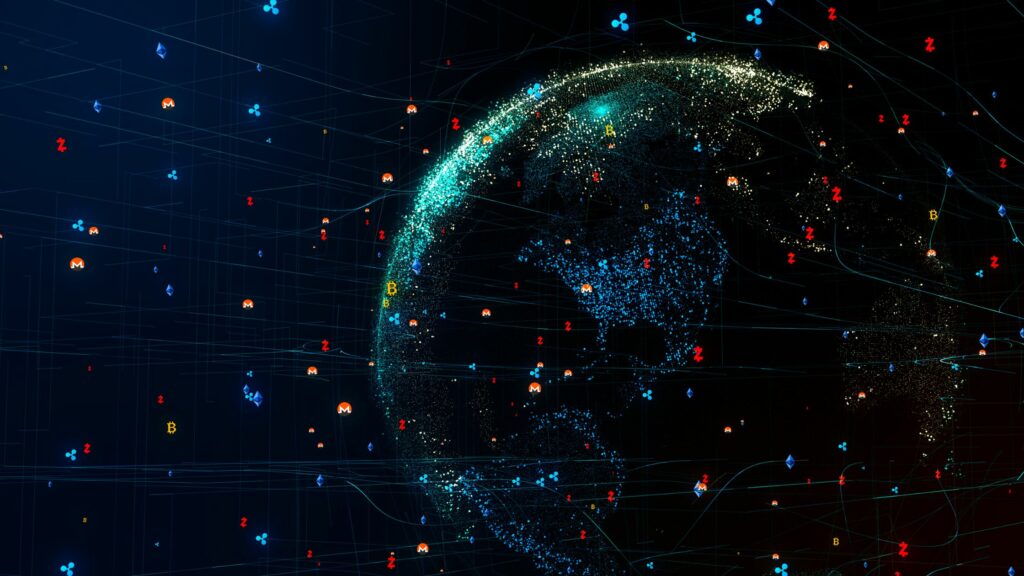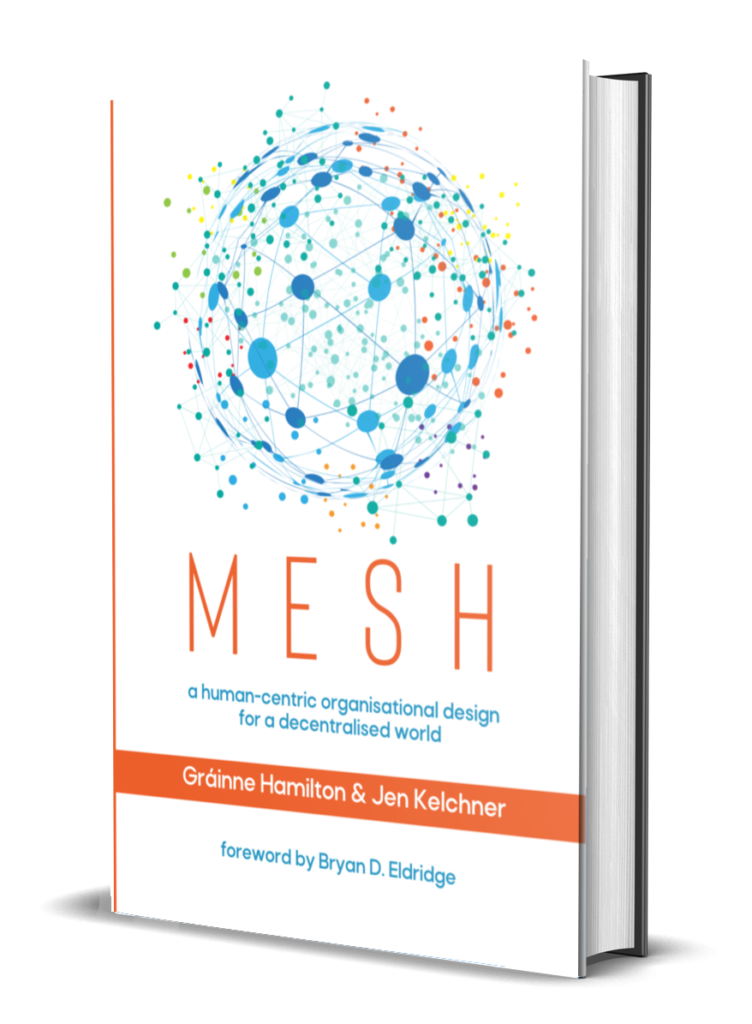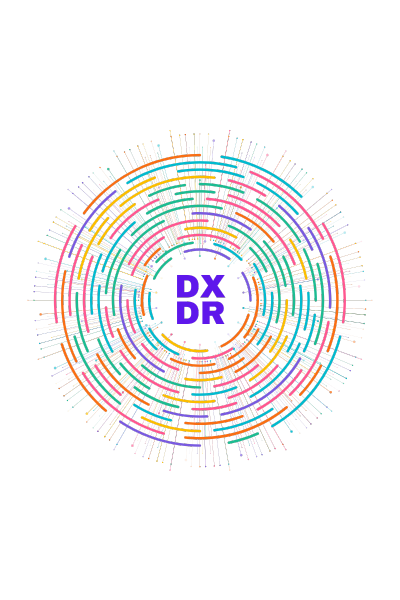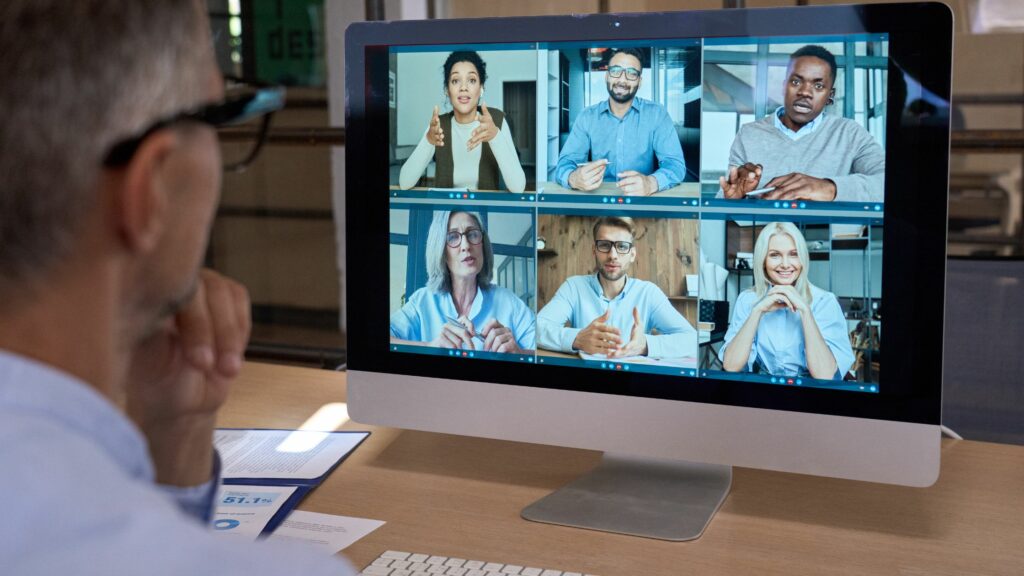Unlocking the potential benefits of decentralization

How Web3 and a mesh organizational design can turn challenges into opportunities
We’re in a new era (or at least the early days of a new chapter)—not just a new period in our technological history, but also a new paradigm for how people work and contribute to solving problems. One significant challenge I’ve found in working with leaders is that most organizations are not designed to adapt—let alone thrive—in this new era.
With the rapid emergence of Web3 technologies and the rise of open source software as the basis for these technologies, I see multiple challenges every organization can turn into epic opportunities right now. I detail these in my recently published book, Mesh, and in this article I’ll offer a quick overview of three of the most distinct: reliance on distributed structures rather than decentralized ones, trapped and untapped value, and the emergence of Web3.
First let’s define Web 3
I’m sure that many of us have some kind of preconceived notion of what Web3, or features like blockchain, is or isn’t. Web3 refers to the next generation of the internet that is decentralized and enables more direct, secure, and private interactions between users without intermediaries. Instead of relying on centralized systems like companies or governments, Web3 uses technology such as blockchain to create a network of peers who can transact and exchange value directly with each other. Features like blockchain for example provides a secure and transparent ledger for recording transactions and tracking data, enabling trust and collaboration. This results in a more open, transparent, and fair environment where users have greater control over their data. Simply put, Web3 is a more empowering and equitable internet. The features and technology of Web3 brings new opportunities for organizations to improve insights, strengthen connections and build trust as we transform many aspects of how we work and do business.
Distributed and decentralized
Challenge 1: Distributed workforce and systems without an updated organizational model
“Distributed” and “decentralized” are often used interchangeably, but they have slightly different meanings.
“Distributed” refers to the distribution or spread of resources, tasks, or functions across multiple locations or devices. This can refer to movements like distributed computing, where a single task is broken down and executed across multiple computers, or distributed systems, where different components of a system are located in different places and communicate with each other over a network, though still coordinated by some central actor or authority.
“Decentralization,” on the other hand, refers to the process of relocating power and authority away from a central point or hierarchy. This can apply to many different types of systems where power is channeled among different branches, or levels of organizational systems where decision-making is allocated across different levels of management, contributors, or community members rather than concentrated in a single entity. Decentralization can increase the speed of decision-making and action.
The fact that a system is distributed does not necessarily make it decentralized, and yet many organizations still wonder why distributing their resources and actors doesn’t lead to performance gains. For example, think of the turn now to a “distributed workforce,” which refers to a group of individuals who work remotely or from different geographic locations and collaborate using technology and communication tools to achieve a common goal. Workers can be distributed but not decentralized, relying on the same outmoded hierarchical systems and structures that typically slow them down—now simply at a distance.
Opportunity: Improve autonomy, resilience, and adaptability through decentralization
Decentralization can also be seen as a way to increase autonomy, resilience, and adaptability in organizations, networks, or systems. By distributing decision-making and power across multiple actors, decentralization allows for more local and diverse perspectives and can reduce the risk of a single point of failure, making the overall system more robust and adaptable to change.
Trapped and untapped value
Challenge 2: When tapped and untapped value exists, it can limit the growth and development of the organization
In the early days of my consulting career, I began to use the phrase “trapped value” when doing strategic analysis work. Since then, my understanding of the concept has evolved; I now see value in organizations as trapped and untapped value (TUV). Understanding TUV helps organizations identify barriers to growth in a more nuanced way.
TUV is the value available to an organization that is nevertheless not being used. Trapped value could be the result of a limitation or barrier that prevents a goal from being realized; untapped value can be overlooked, unseen, or undervalued opportunities and resources.
Organizations rely on a combination of procedures, systems, and workflows to operate. However, as time goes by, organizational actors introduce new procedures and systems without taking into account the previous ones or their potential effect on the overall organization. This can lead to siloed departments, communication breakdowns, and an accumulation of procedures that result in pockets of TUV.
Opportunity: Releasing the regenerative value of capabilities and capacities
Throughout Mesh, my co-author Gráinne Hamilton and I examine burnout, or performance TUV; blackouts, or lack of visibility of skills; and the circuit breakers that prevent optimized deployment of resources through the organization and ecosystem. We also explain how an organization’s various “power generators” offer sets of capabilities and capacities for releasing TUV. Doing this can lead to organizational regeneration—that is, an organization has avenues for transforming through continuous cycles of change, remaining relevant and sustainable. With an open, regenerative culture that innovates on how its people contribute, the people’s capabilities become more visible, teams become more balanced, and value can be realized in newly beneficial ways.
The emergence of Web3 & its features
Challenge 3: It’s all so new and overwhelming
Web3 technologies—such as blockchain, smart contracts, and tokenization—are relatively new. While some organizations are actively using these technologies, many others are still in the process of experimenting with them, exploring their potential benefits, figuring out how to best implement them.
Blockchain, for example, has been used in supply chain management to increase transparency, reduce costs, and improve security. Some organizations are also using blockchain to develop digital identities and to create new business models, such as tokenization of assets. Smart contracts, which are self-executing contracts with the terms of the agreement written into code, are being used in industries such as finance, insurance, and real estate to automate processes and reduce costs.
Many organizations are still in the process of evaluating the potential benefits and figuring out how to best implement these technologies to grow and scale their business.
Opportunity: Gain insights from data, establish trust, and build the future
Web3 technologies offer a wide range of opportunities for organizations to gain insights, improve connections, and establish trust for organizational gain. However, organizations also need to consider how to integrate and take full advantage of these technologies. Decentralization and Web3 also create unparalleled opportunities for rapid organizational and commercial benefits, as well as for building connections and trust. For example, data that can be sourced and verified via blockchain can provide an incredible degree of visibility and pose new connections to solutions. Likewise, the decentralization of contributions and community can empower connections across “borders” and boundaries to rapidly solve problems or even maintain ongoing projects, while trustless transactions can enhance organizational trust.
My recommendation is that organizations prioritize digital transformation initiatives that align with the shift towards Web3 technologies, and be mindful of their organizational models, processes, and cultural behaviors to take advantage of this new era.
An open and regenerative organizational culture can optimize the benefits of decentralization
In order to effectively engage with and maximize the use of Web3 technologies, organizations to adopt more open and decentralized practices.
Open approaches tend to espouse granularity, flexibility, and reusability. Open source cultural practices organize around transparency, participation, and community. The open organization characteristics, for example, elevate the idea of people coming together to actively participate and co-create in community.
As we look deeper at Web3, we see that its tenets revolve around transparency, autonomy, and decentralization; they emphasize an infrastructure that enables distributed components that may or may not collaborate to develop outputs but still connect in an organizational context.
We can connect these complementary views on open practices by stressing three tenets: connection, visibility, and trust (incidentally, this is what my co-author and I do in Mesh). These tenets are designed to bridge the convergences and divergences of open and Web3, while also expanding upon them. It’s important to be human-centric and prioritize personal agency and psychological safety while at the same time enabling open, regenerative behaviors to foster a mesh organizational design.
Organizations can optimize the benefits of decentralization by catalyzing the components and connections of an open and regenerative culture and recognizing that a mesh structure can connect, work together, create value, and attract others to participate. As a model, mesh allows organizations to make the most of things like data, internal knowledge, and contributions of its people by using, combining, and reworking them. Managing the distributed and decentralized nature of how we work and collaborate can be done with Web3 solutions such as blockchain, tokenization, and smart contracts. Visualization tools can enable collating, connecting, and clustering data from a variety of sources to provide helpful insights, to optimize processes—and, ultimately, to release value.
Thinking about solutions to these challenges?
You might be interested in Mesh
Our organizational design & methodology can help in digital transformation. Check out the chapter on Skills Visibility & Optimizing Deployment which is critical in this unfolding era.








